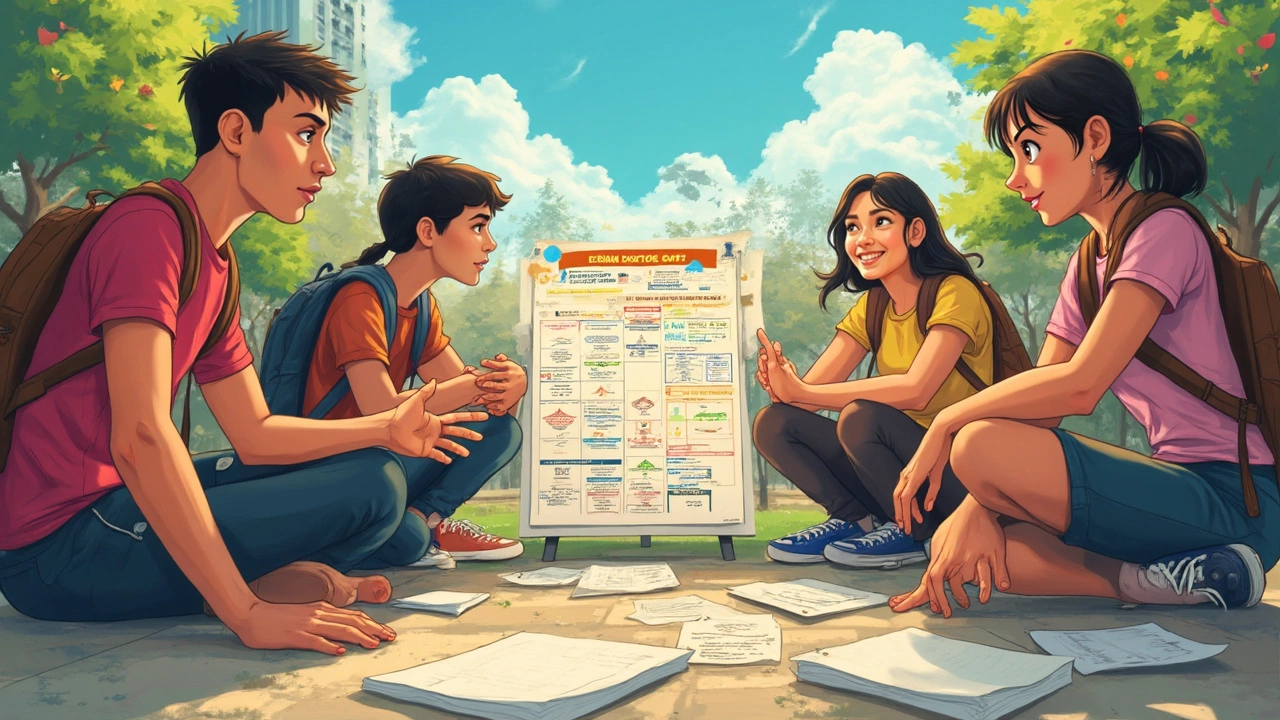If there's one exam that sends shivers down students' spines, it's the Gaokao. Known as the most challenging exam globally, the Gaokao is China's National College Entrance Examination. But what exactly makes it so daunting?
Let's break it down. The Gaokao is notorious for its rigor and extensive syllabus, covering subjects like Chinese, math, and a foreign language, often English. Students face intense competition as their future hinges on these scores, which determine university admissions across China.
The pressure isn't just inward; it's societal. Families invest significant resources into their children's preparation, often hiring tutors and enrolling in extra classes. The stakes are high, punishing anyone who dares to not give their absolute best.
So, how do students prepare? Well, it's a mix of hard work and smart strategies. Many stick to consistent study routines, practice past exam papers, and focus on weaker areas. Balancing stress with self-care is crucial. We'll dive deeper, offering practical tips and shedding light on this educational marathon.
- Understanding the Gaokao
- What Makes Gaokao So Tough?
- Preparation Tips for Tough Exams
- Impact on Students and Society
Understanding the Gaokao
The Gaokao, which literally translates to 'high exam', is not just an ordinary exam in China—it's a pivotal rite of passage. Taken annually by millions of students, this examination is the key to gaining entrance into higher education institutions in China. But what exactly sets it apart from other tests?
What is Tested?
Students taking the Gaokao are tested on a wide array of subjects including Chinese, mathematics, and a foreign language, most commonly English. Depending on the student's chosen stream (science or arts), additional subjects like physics, chemistry or history, and geography are included. This comprehensive approach forces students to focus on both breadth and depth of knowledge.
The Format
Typically held over two or three days in June, the Gaokao examines not just factual recall, but also critical thinking and problem-solving skills. Each exam paper is known for its challenging questions that push students to their intellectual limits. With essays, multiple-choice questions, and problem-solving exercises, it's designed to be exhaustive.
Statistics
| Year | Participants |
|---|---|
| 2023 | Approx. 13 million |
| 2022 | Approx. 12.5 million |
In 2023, about 13 million students undertook this daunting challenge, underscoring its national importance. The entire country comes to a near halt during this period, with traffic rerouted and construction halted near exam venues to ensure tranquility for examinees.
Understanding the Gaokao means recognizing that it's more than just an exam. It's a social phenomenon—high-stakes and life-defining. For many students, it is the culmination of years of preparation and sacrifice, defining their educational and career trajectory.
What Makes Gaokao So Tough?
The Gaokao isn't just another test; it's a national phenomenon in China. Students prepare for years, and here's why the stakes are so high. It's the sole determinant for university admissions, making it a massive gateway to future opportunities. This alone cranks up the pressure by several notches.
Extensive Syllabus
First off, the syllabus is nothing short of enormous. Students tackle subjects ranging from Chinese literature to math and even pick a major subject for further specialization. The breadth and depth required are unparalleled.
Intense Competition
Secondly, the competitive exams nature can't be overstated. With millions of students competing every year, standing out is the only option if you want a spot in a top-tier university. It's this competition that creates an all-or-nothing mindset.
Length and Duration
The exam marathon doesn't help either. Spread over two to three days, this isn't just a mental race; it's an endurance test. Keeping your focus sharp for such extended periods is key, making it even more exhaustive.
Psychological Pressure
Then there's the psychological grind. Families, schools, and even society see this as a pivotal moment. There's immense pressure not just to succeed, but to excel. Failing the Gaokao can feel like closing the door on a promising career.
But within this daunting framework, students often develop incredible resilience and problem-solving skills. Whether it's perseverance or the ability to work under pressure, they emerge stronger, ready to face the world beyond exams.

Preparation Tips for Tough Exams
Facing the world's toughest exam can be daunting, but with the right strategies, you're not alone in this uphill battle. Here are some practical tips to tackle exams like the Gaokao and other challenging tests.
1. Craft a Study Plan
Preparation without a plan is like setting sail without a map. Create a detailed study schedule that covers all subjects. Allocate more time to areas that challenge you, ensuring a balanced approach. Consistency is key, so stick to your plan religiously.
2. Use Past Papers
Diving into past papers can be a game-changer. They give insight into the exam format and the types of questions that frequently appear. Practice under timed conditions to mimic the real test environment. This can help reduce anxiety and improve time management.
3. Take Regular Breaks
It might sound counterintuitive, but taking breaks is crucial. Studying non-stop leads to burnout, while regular short breaks rejuvenate your mind. Utilize techniques like Pomodoro, where you study intensely for 25 minutes followed by a 5-minute break.
4. Prioritize Your Health
What good is intense study without a healthy mind and body? Ensure you get enough sleep, maintain a balanced diet, and exercise regularly. A healthy lifestyle enhances concentration and keeps stress at bay.
5. Join Study Groups
Studying in groups can foster mutual learning and motivation. Join or form a study group where you can share resources, discuss difficult topics, and quiz each other. It’s a chance to learn collaboratively while having a bit of fun too.
6. Seek Professional Help
If resources allow, consider hiring a tutor for specific subjects. A professional can offer targeted advice and keep you on track. They can customize learning strategies tailored to your needs.
Implementing these strategies doesn't guarantee an easy ride, but it certainly equips you to handle the heat better. Remember, it's not just about hard work. Working smart counts just as much. Go get it!
Impact on Students and Society
The Gaokao isn't just a test; it's a defining moment in the lives of millions of Chinese students. The pressure to perform can be overwhelming, leading to high levels of stress and anxiety. After all, this exam is a major gateway to higher education and, by extension, future career opportunities in China.
The Personal Struggle
Many students prepare for the Gaokao for years, often sacrificing leisure, hobbies, and even friendships. The mental strain is huge. Studying becomes a full-time job, but without the regular breaks or weekends off. While some thrive under pressure, others find it incredibly challenging.
According to reports, extreme competition and family expectations can sometimes lead to burnout or mental health issues. Support from teachers, family, and peers can make a world of difference, yet not all students have access to these resources.
Societal Impact
On a societal level, the Gaokao influences not only education but also economic and social structures in China. The exam scores determine university placements, meaning students from areas with fewer resources or lesser-quality schools might face disadvantages compared to those in more developed regions. This disparity has sparked debates about educational equality in the country.
The intense focus on academic achievement reflects wider societal values, placing tremendous emphasis on education as a path to upward mobility. However, this focus sometimes comes at the expense of creativity and holistic development. Balancing academic excellence with personal growth remains an ongoing challenge.
Long-term Consequences
The Gaokao has far-reaching implications. Success can lead to entry into prestigious universities, opening doors to better job prospects and higher earnings. Conversely, students who don't perform well could face limited opportunities, affecting their socioeconomic status in the long run.
Overall, while the Gaokao can act as a crucial stepping stone, it also highlights the broader issues within the educational system, prompting calls for reform to reduce pressure and foster a more balanced educational approach.
